
Made with Liebherr
Magnificent buildings steeped in history, famous cultural attractions or stadia with thousands of people watch matches and concerts. In short – venues that are exciting for all of us and leave their mark. And venues about which we can proudly say: Made with Liebherr.
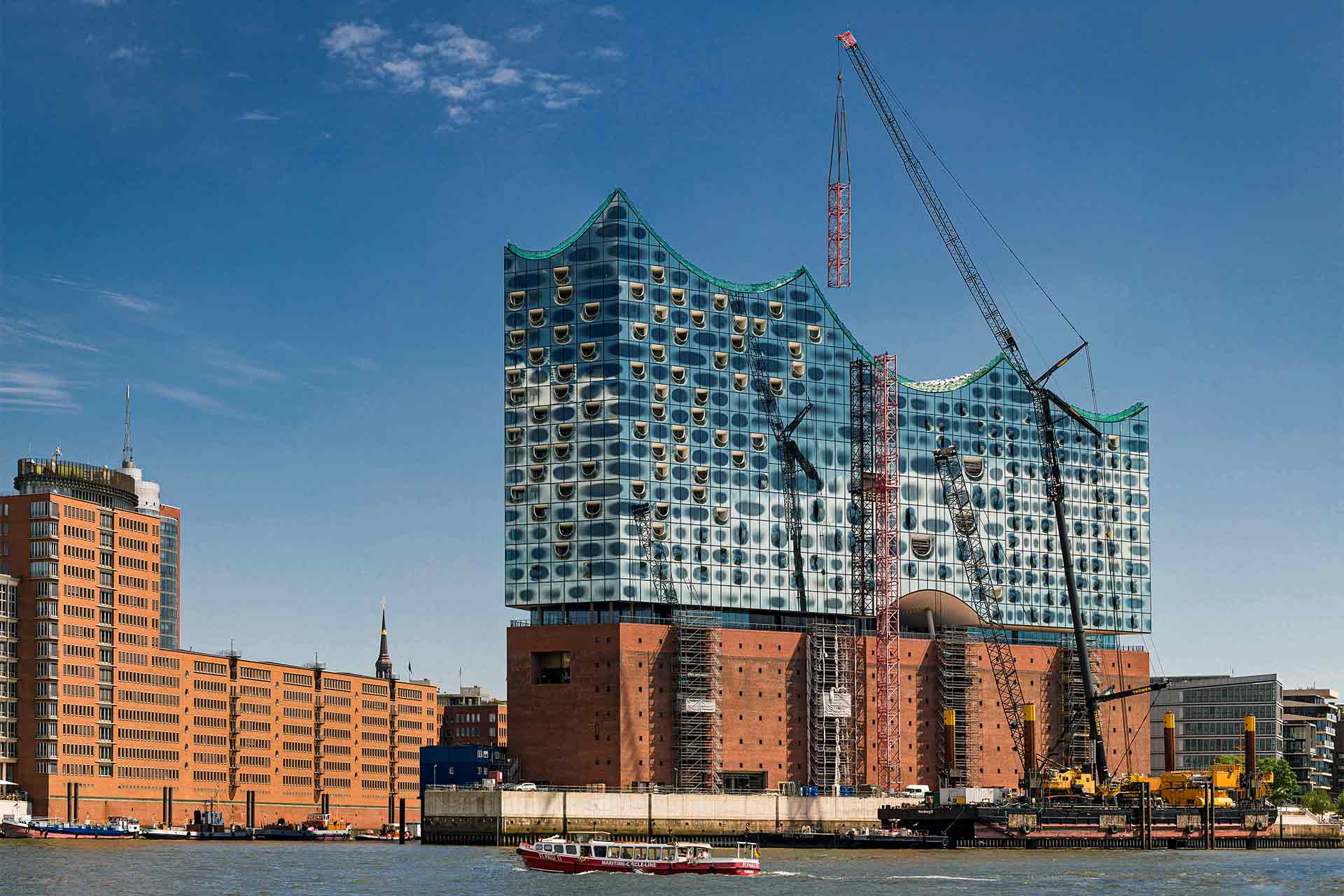
LTM 1750-9.1 dismantles last construction crane at Hamburgʼs Elbphilharmonie
Since its completion in autumn 2016, the Elbphilharmonie, now affectionately known as the “Elphi” by the people of Hamburg, has become a world famous concert hall and an architectural icon in the Port of Hamburg. Hamburg-based crane and heavy haulage contractor Thömen used a Liebherr LTM 1750-9.1 mobile crane to dismantle the last of the four large top-slewing cranes which for years have dominated the skyline at the former quay warehouse.
A demanding job completed in front of an imposing harbour backdrop. The crane erected on the south-west façade of the building had to be dismantled from the River Elbe. Seven years previously this construction crane had been erected from a pontoon despite the fact that the river in the Port of Hamburg is tidal. At that time, an LTM 1500-8.1 from Thömen was used. However, the dismantling work had to be completed by a more powerful mobile crane from a fixed jack-up platform since the crane was directly attached to the building at a final height of around 120 metres. This was lowered as far as possible while still allowing the boom to be slewed over the edge of the building.
Another advantage of a larger mobile crane was that several tower sections of the construction crane could be placed on the hook with each hoisting cycle so that the work could be completed faster. For this purpose, the nine-axle mobile crane was set up and equipped for use on a 75 metre long jack-up platform and equipped for the operation – with 114 tonnes of ballast, a 19 metre telescopic boom extension and a 66 metre luffing jib. This enabled it to reach the required hook height of 127 metres. The concept worked – the tower crane was dismantled and the Elphi opened its doors – both with great success.
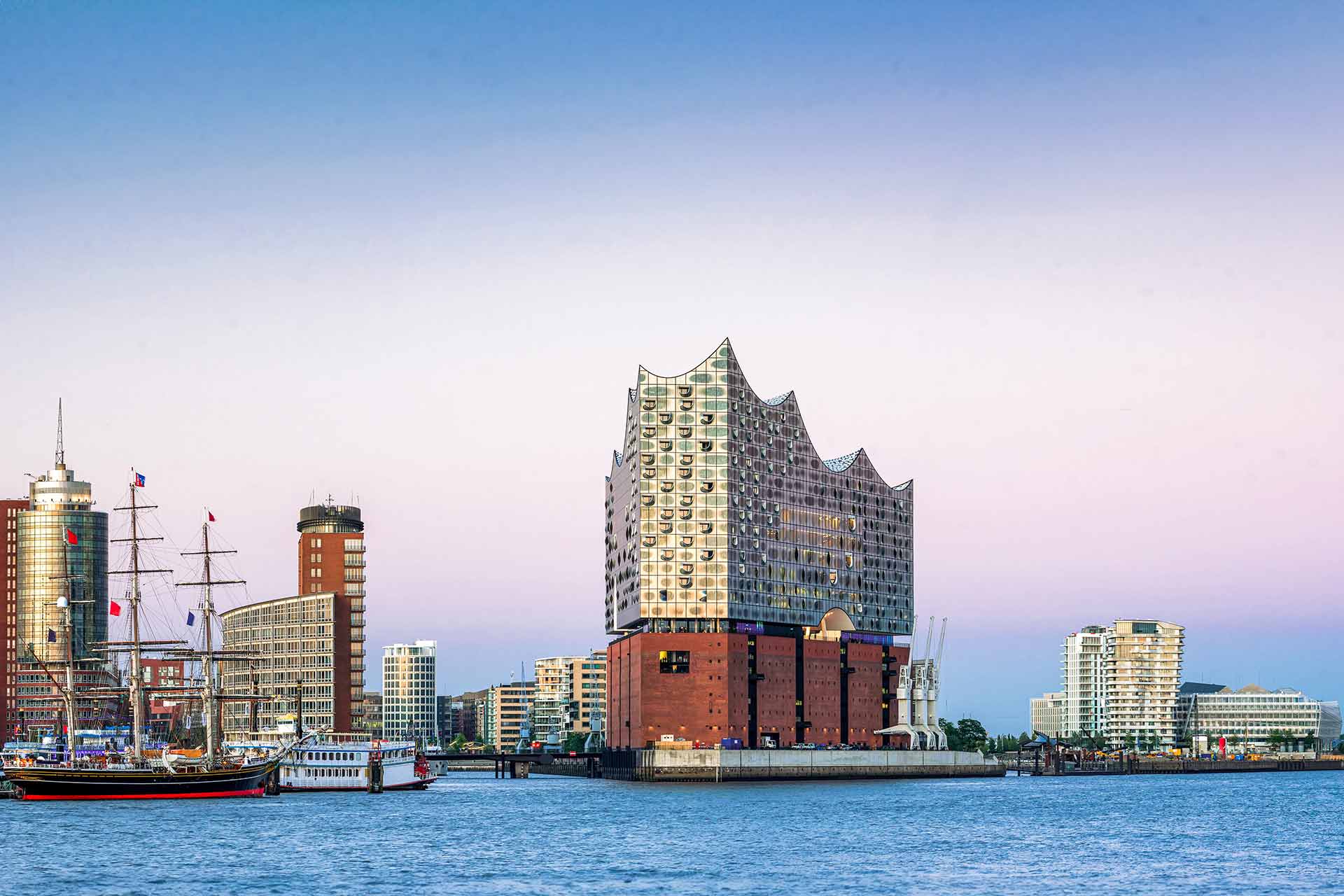
Hamburg landmark
Completed in autumn 2016 with a height of 110 metres, it has become the new landmark of the Port of Hamburg – The Elbphilharmonie in HafenCity was opened at the beginning of 2017 after ten years of construction. By then, Liebherr mobile cranes already had a successful appearance behind them.
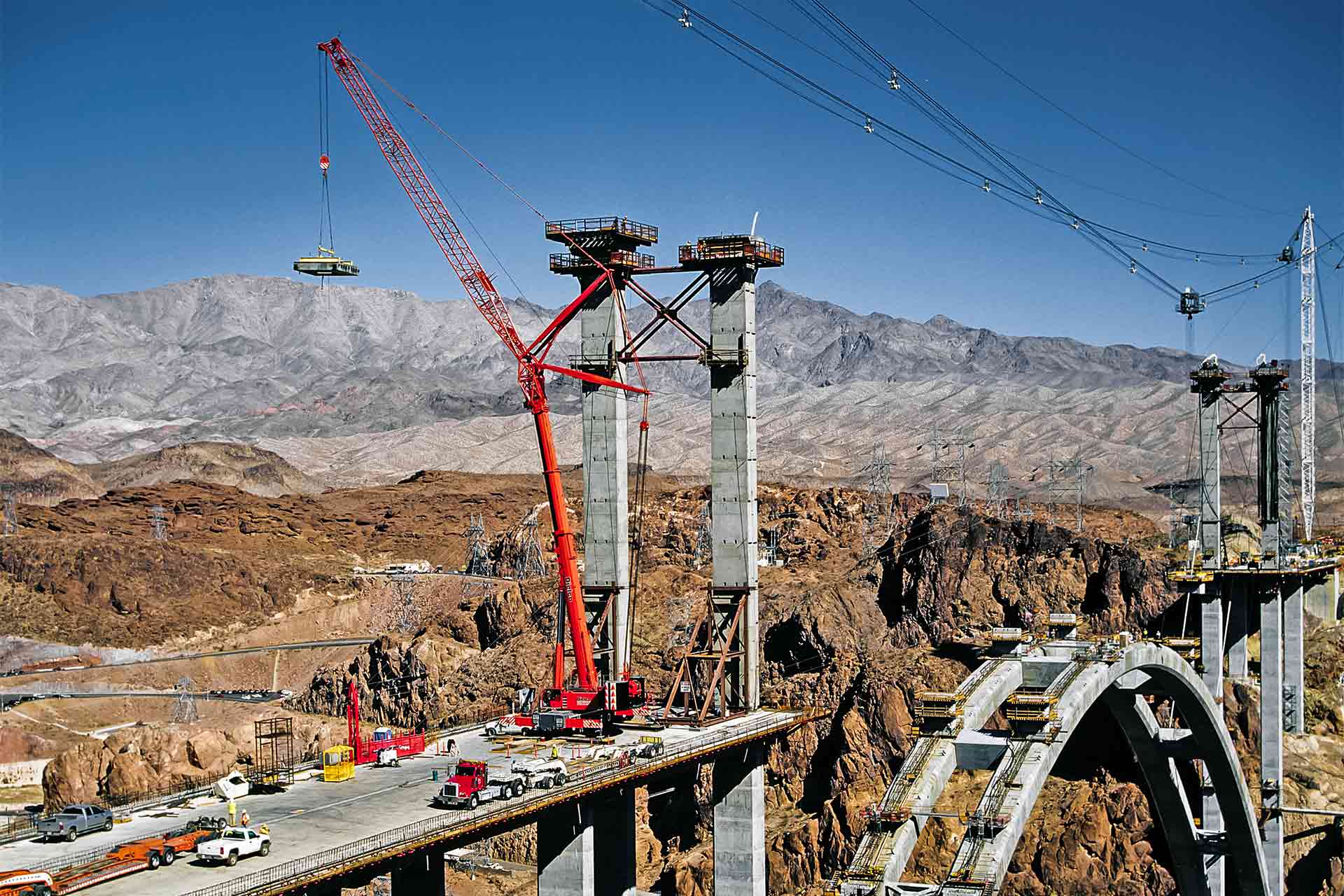
Over two states
The US states of Nevada and Arizona are separated by the Colorado River – and since 2010 officially by the Mike OʼCallaghan-Pat Tillman Memorial Bridge. On completion, the bridge was one of the longest and highest concrete arch bridges in the world. With a total length of 580 metres and a width of 26.8 metres, the dimensions of the bridge are impressive – as are those of its support piers, with the highest one measuring just under 88 metres. The arch itself has a span of 323 metres. The bridge, which opened in 2010 after a construction period of around seven years, was named after former football star Pat Tillman and former Nevada Governor Mike OʼCallaghan – both of whom died while it was under construction. Las Vegas-based crane contractor Dielco used Liebherr cranes on multiple occasions. In our picture, you can see one dismantling a support pier. These piers were specially erected as a temporary structure to enable the large concrete arch to be completed piece by piece. An LTM 1400-7.1 can be seen here dismantling the individual concrete parts high above the river.
But the location is almost as much of a highlight as the Liebherr crane – many visitors and admirers of the Hoover Dam can now take the opportunity to get a birdʼs eye view of the huge dam on a walkway over the large bridge.

Records high above the water
The Mike OʼCallaghan-Pat Tillman Memorial Bridge in Nevada, USA, is one of the highest bridges in the world. It carries Highway 93 some 270 metres above the Colorado River and towers over the famous Hoover Dam. Involved in the construction: a Liebherr LTM 1400-7.1.
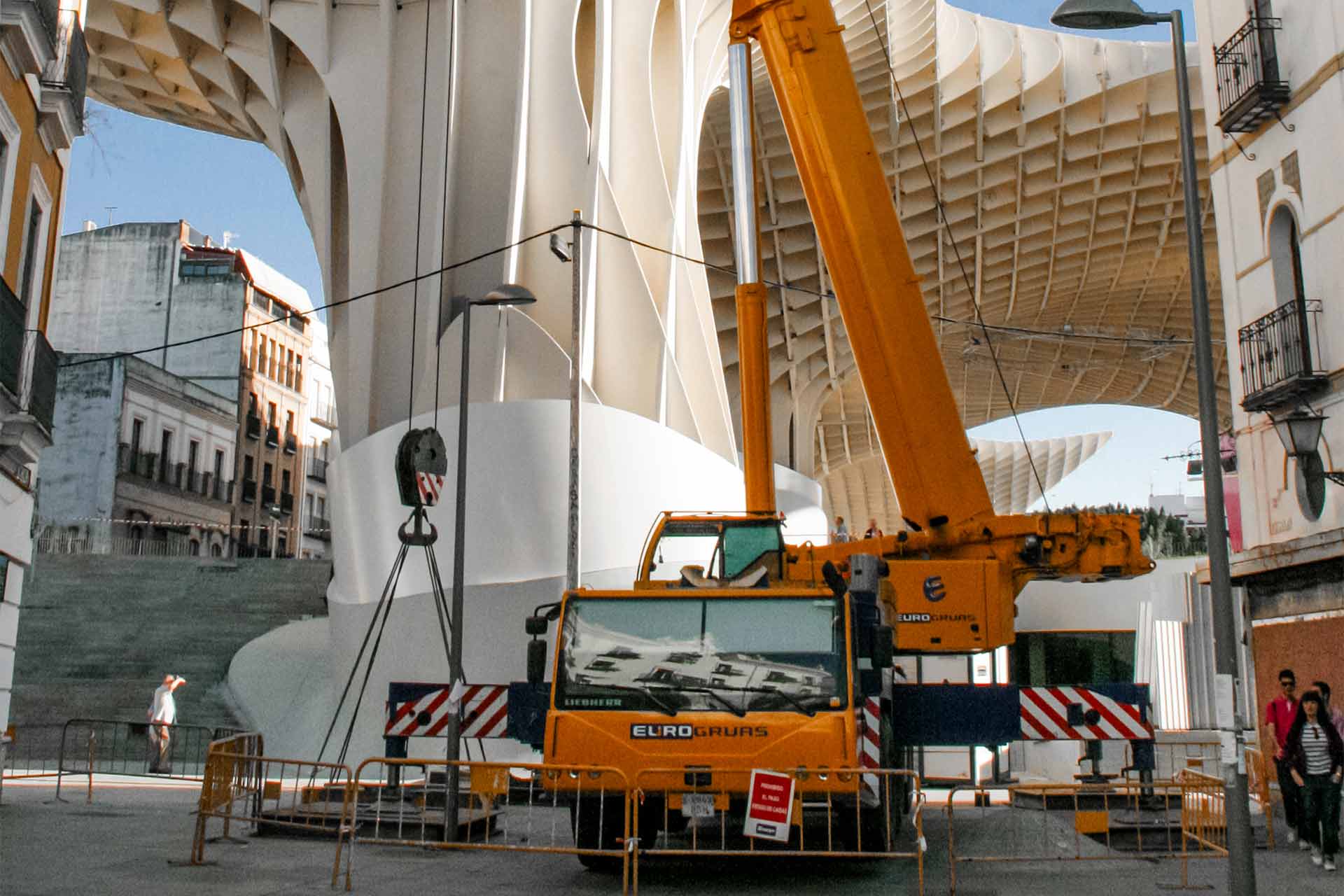
Metropol Parasol – taking inspiration from nature
The Metropol Parasol spans parts of the old town of Seville in Spain. Because of its shape, the locals like to call it “Las Setas”, or “The Mushrooms”. These mushrooms are a hybrid construction made of wood, concrete and steel, built between 2005 and 2011 in the Plaza de la Encarnación on the site of a former market hall dating back to 1842. The structure consists of six parasol-like structures with a mushroom-like shape that are connected in places to form a sunshade. The building was inspired by the columns of Seville Cathedral and by the weeping fig trees in the nearby Plaza del Cristo de Burgos.
Under the Metropol Parasol there are a market, shops, bars, restaurants and an archaeological museum where ruins from Roman and Moorish times can be visited. Another highlight among the large mushrooms is that many public events can now take place outdoors on the elevated plaza. On the roof of the large umbrellas there are function rooms and a series of walkways that offer impressive views over the Andalusian city.
Around 3,500 cubic metres of laminated veneer timber and 700 tonnes of steel were used in the construction work. They consist of 3,400 different components – some of which were hoisted by an LTM 1250-6.1 from Spanish crane rental contractor Eurogruas during the construction period, which lasted around five years.

The mushrooms of Seville
Las Setas (English: the mushrooms) is a landmark in Seville in southern Spain, around 150 metres long, 70 metres wide and 26 metres high, which grew between 2005 and 2011. When it was completed, it was the largest wooden structure in the world – created with a mobile crane from Ehingen.

LTM 1500-8.1 places the crown on city palace
In autumn 2020, an LTM 1500-8.1 owned by Mobi-Hub completed a job in the centre of Berlin in front of a large crowd – the 8 axle crane placed the magnificent cupola on the new Humboldt Forum. The historically reconstructed cupola is decorated with eight angel figures and palm leaves. The reconstruction of Berlin Palace, which was destroyed several years ago, has been undertaken to restore Berlin’s historic cityscape.
The reconstruction of the former Berlin Palace was started in 2013. Since 2021 it has been home to non-European collections and other exhibitions. It also provides a new venue for lots of public events. The LTM 1500-8.1 crowned the Palace with its magnificent, almost completely historically reconstructed cupola. The public watched the cupola being hoisted by the 8-axle crane with great interest. It had been set up with a 42 metre luffing lattice jib and 90 tonnes of ballast to enable it to hoist the filigree load to a height of 70 metres.
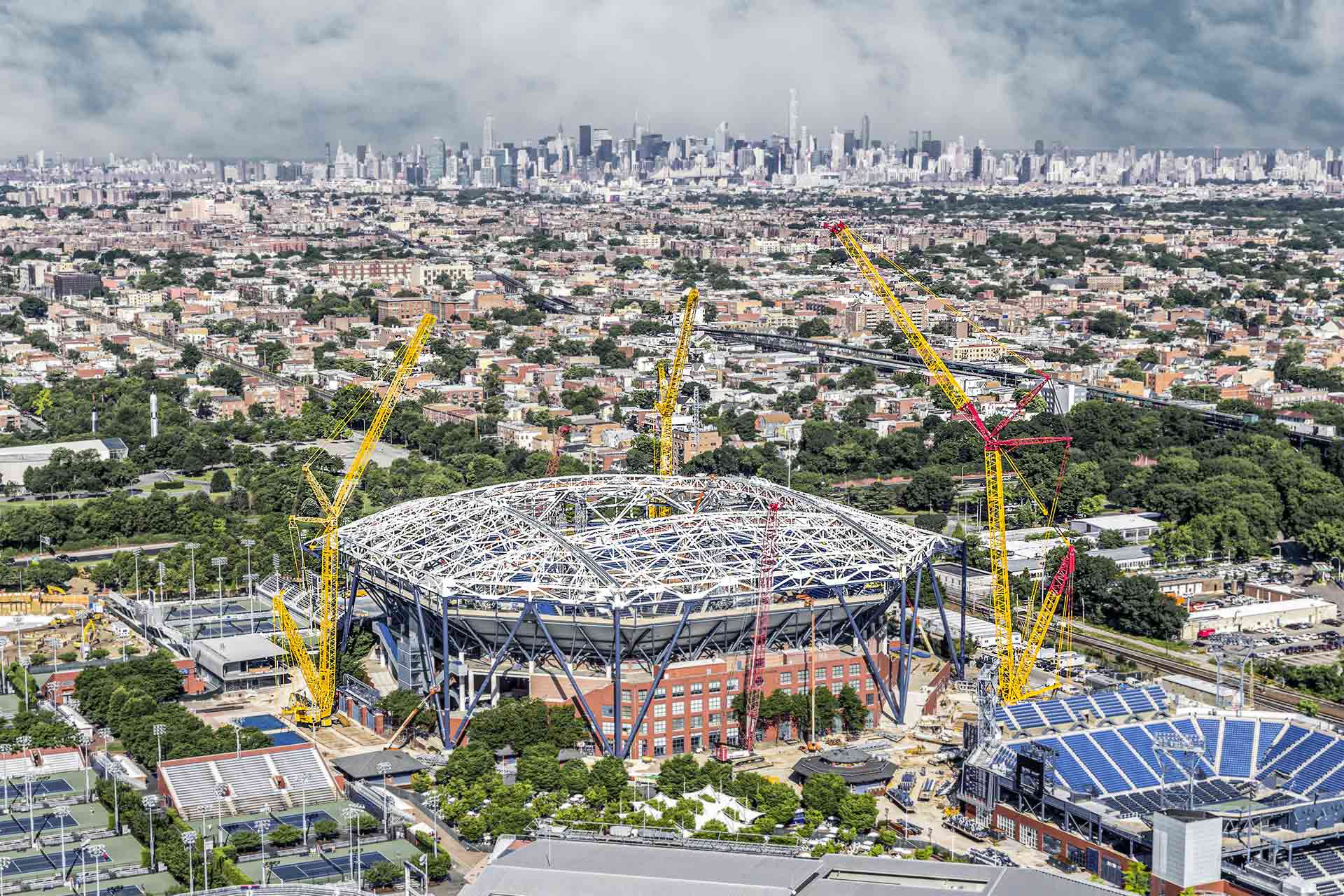
Liebherr cranes place the roof on the largest tennis stadium in the world
The Arthur Ashe Stadium in New York is the largest tennis stadium in the world. The stadium was modified between 2013 and 2016 and fitted with a retractable roof to avoid all too frequent match postponements at the US Open caused by rain. A Liebherr LR 11000 crawler crane and two LR 1600/2 machines operated by American crane contractor Buckner HeavyLift Cranes put the steel structure for the roof in place over a period of ten months. The three heavy duty cranes were at the site from autumn 2014 to July 2015 to complete the roof structure. The route to the installation of a roof on the stadium had been difficult as the American Tennis Association USTA had been looking for ten years for a solution, which was both feasible in terms of costs and logistics, and would also fit in with the architecture of the stadium as a whole. The stability of the foundation soil also caused problems. “The site was a major challenge logistically and a great deal of planning was required just to erect and dismantle the cranes. Liebherr crawler cranes feature an efficient erection process and short set-up times. That helps to keep costs down”, says Kevin C. Long, Project Manager at Buckner.

A home for the yellow ball
The Arthur Ashe Stadium in New York is the largest tennis stadium in the world and the venue for the US Open. Built in 1997 and named after American tennis star Arthur Ashe (1943–1993), the court can hold around 24,000 spectators.
Plans for a roof structure were started in 2013 and the modification work was completed in 2016 – with hard-working Liebherr cranes lending a helping hand. Today, the roof can be closed in 5 minutes 42 seconds.
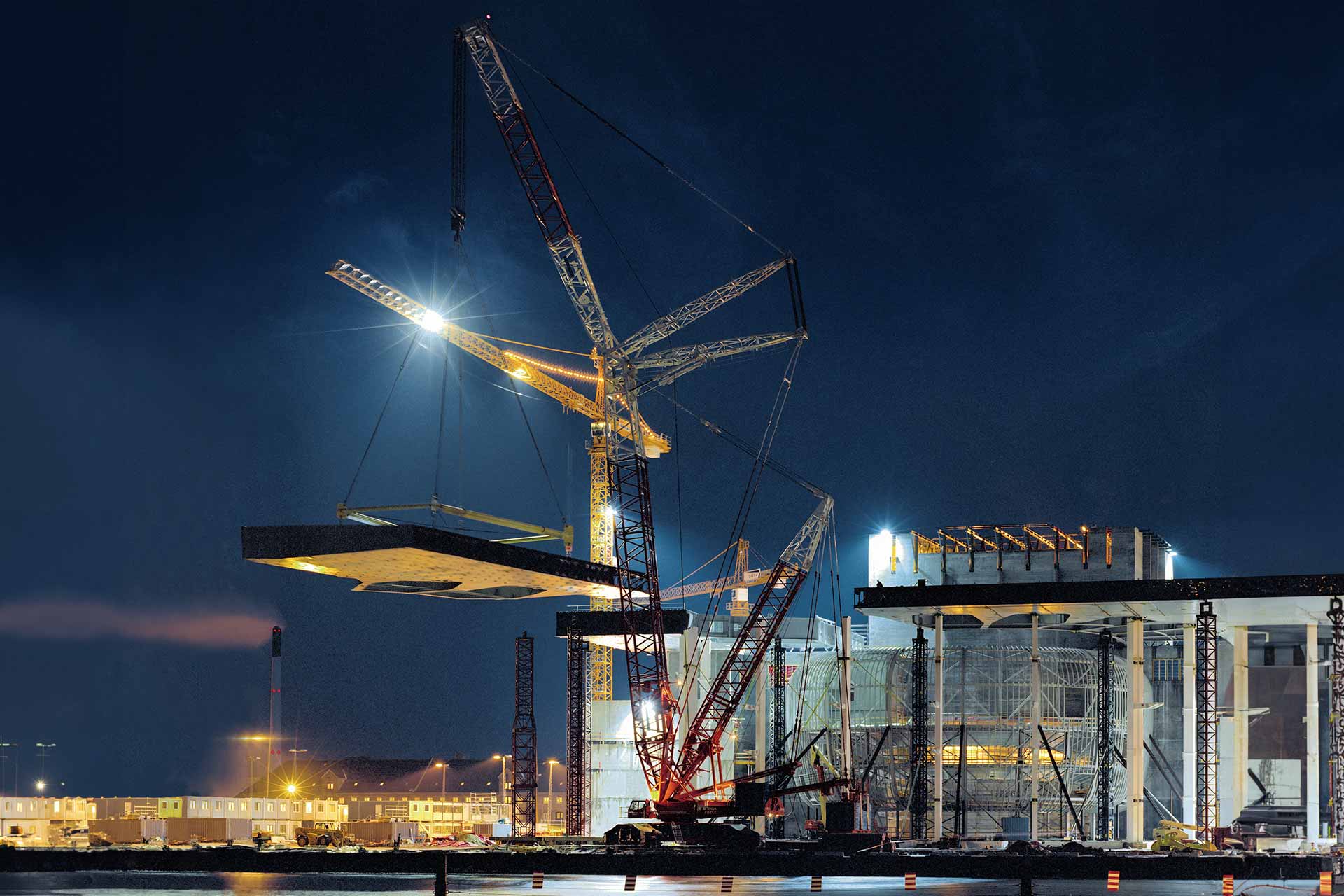
Steel giant positions steel segments
A sophisticated material transport process was the start of a spectacular crane job for a Liebherr LR 1750 crawler crane in Copenhagen, which lasted almost two months. The heavy duty crane was required to hoist five roof segments for the construction of the new opera house. In 2003, over 50 low loaders set off to transport the flagship of crane contractor Riga Mainz (then known as Riga & Eisele) to the Danish capital over 800 kilometres away. The team from Mainz had to maintain a minimum distance of six metres from the temporary quay wall for positioning and moving the LR 1750 heavy duty crane. The crawler crane was not allowed to get closer to the bank as during its hoisting processes with full ballast and a gigantic load on the hook, a total weight of around 1,300 tonnes was pressed into the ground. “During the lifts, some of which were carried out at night due to bad weather, we had a net weight of 235 tonnes. With hook block and slings, such a load case added up to about 265 tonnes,” recalls Uwe Langer, owner of Riga Mainz and at the helm of the crane at the time. The roof structure was towed from the Danish mainland to the Copenhagen port basin on a floating bridge and then hoisted into place by the LR 1750. After hoisting the load, the crane had to move around 25 metres to the site. The heavy components remained on the hook for up to 24 hours after being positioned before they were welded accurately into the structure. “This LR 1750 was clearly the start of a new generation of crawler cranes, which is now fully established. With a wide range of features which Liebherr implemented for the very first time in this crane model and which today seem to be a matter of course”, says Langer.

Art in Copenhagen
The Royal Danish Opera House in Copenhagen is one of the most modern stages in the world. The building is a gift from the “A. P. Møller and Chastine McKinney Møller Foundation” to the Danish city. Arnold Peter Møller was the co-founder of Mærsk, one of the largest shipping companies in the world.
Designed by Henning Larsen, work on the building started in June 2001. The opera house was opened on 15 January 2005 with a special concert – after Liebherr cranes had already earned their own standing ovation.
